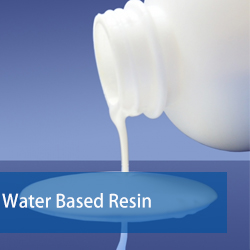Since the four yaw brakes are partially loaded with brake load during yaw operation, the cabin can run smoothly during yaw; when no yaw is performed, the four brakes apply the combination of full load and yaw disc Used to fix the cabin, reducing the wear of the entire system and the impact of external loads on the system. When yawed, the yaw motor has thermal relay protection, and the yaw gear torque is controlled so that the yaw motor does not overload. The yaw ring and yaw pinion use wide teeth, which guarantee a long service life due to low tooth surface pressure and wear. In extreme wind conditions, the wind turbine is shut down, thus ensuring that the entire system is not damaged.
The tower fan can be designed and produced according to the local conditions. Sm or other height tubular tower. The tubular tower is conical with a diameter of 3 m at the bottom. A ladder and a safety rope and a working platform are installed inside the tower, and the control system is placed on the lower platform inside the tower. The tubular tower is sandblasted and painted to prevent corrosion. According to the actual situation, other anti-corrosion methods can also be selected.
The controller of the controller fan has the following functions: monitoring, protection, normal control, open and shutdown, fault detection, display, keyboard and button input control, remote control interface, operation log parameters, etc. The controller provides a display than D, and the display is divided into four parts, with main display, fault display, running parameter display, and running record display.
Display all input signal data, output status, current operating status, and running status prompts of the fan; the fault display provides prompts for several faults that have occurred recently in the fan, the output of the fan input and the operation status record when the fault occurs, and various types of fan occurrences. The cumulative number of faults; the operating parameters show the various operating parameters and protection settings of the fan. These setting parameters are adjustable. They can be used here to modify the position and button to control the local control of the turning fan according to the operation requirements. Through the touch panel on the controller and the buttons on the control cabinet, the input control task responds to various people and performs corresponding control.
When the wind speed is higher than the response for 10 minutes, the normal brake is realized: the pneumatic brake acts first, and after the speed is lowered, one of the two sets of hydraulic disc type mechanical brakes, such as the pneumatic brake action, the speed cannot drop, two The group hydraulic disc type mechanical brakes act simultaneously.
When a general fault is encountered, normal braking is achieved.
Emergency braking is achieved when a specific fault is encountered: the pneumatic brake acts simultaneously with the two sets of hydraulic disc brakes.
Water-based resin refers to a type of adhesive or sealant that is made from a combination of water and a polymer base. These resins are commonly used in various industries due to their eco-friendliness, ease of application, and cost-effectiveness.
Here are some key points about water-based resins:
1. Environmental Benefits: Water-based resins have lower volatile organic compound (VOC) emissions compared to solvent-based resins, making them more environmentally friendly. This makes them a popular choice for applications where reducing the environmental impact is a priority.
2. Versatility: They can be used in a wide range of applications including woodworking, furniture making, construction, automotive, and even in the production of composite materials. They can also be formulated to provide different properties such as flexibility, strength, or resistance to heat, chemicals, and UV light.
3. Ease of Use: Water-based resins are generally easier to apply than solvent-based ones because they do not require special equipment or protective clothing. They can often be cleaned up with water rather than harsh solvents.
4. Curing Process: These resins cure through a process called cross-linking, which involves chemical reactions between the components to form a solid material. The curing time can vary depending on factors like temperature, humidity, and the specific formulation of the resin.
5. Disadvantages: While water-based resins offer many benefits, they may not provide the same level of durability and resistance as solvent-based resins. They might also have slower drying times and may not perform well under extreme temperatures or in high-moisture environments.
6. Types: There are various types of water-based resins including acrylic, polyurethane, epoxy, and alkyd resins, each with its own set of properties and uses.
7. Safety: They are typically less hazardous than solvent-based resins, but users should still follow proper safety guidelines when handling them, especially during the mixing and application phases.
8. Application: Water-based resins can be applied using a variety of methods including spraying, brushing, or rolling, depending on the specific application and the desired finish.
When choosing a water-based resin, it's important to consider the specific requirements of your project, including the intended use, environmental considerations, and any necessary performance characteristics.

Silicon Resins, Resin Material, 9003-01-4 Water Based Resin, Coating With Resin,Water Based Epoxy
Guangzhou Quanxu Technology Co Ltd , https://www.skyelecteflonheater.com